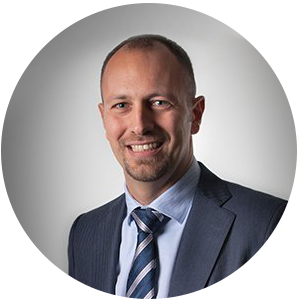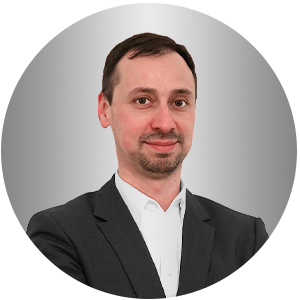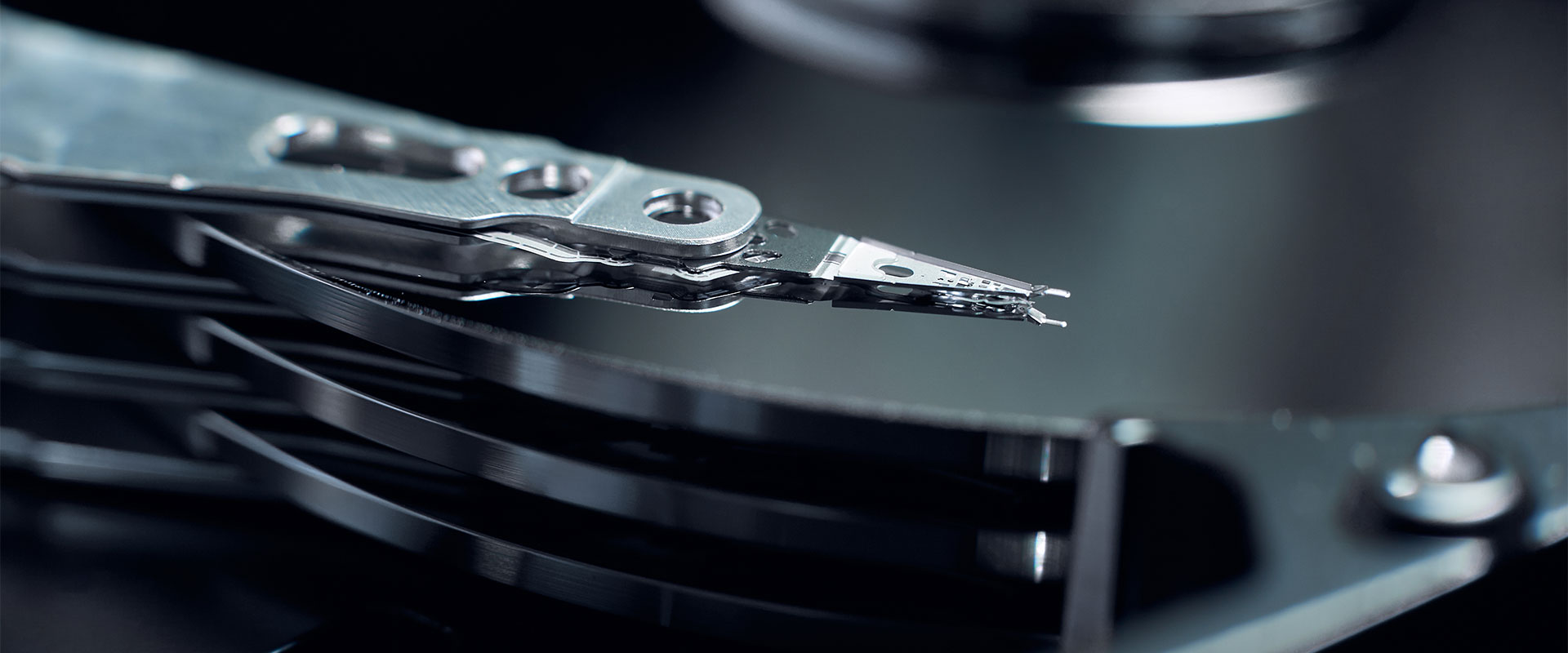Software-defined storage (SDS) is a hot topic these days. No longer are buyers opting for services and solutions that require them to pick a vendor and stick with that vendor for the long haul. These days, more and more are opting instead to switch to agnostic solutions that let them swap their hardware and software on the fly while scaling up their data storage systems and also keeping their wallets fuller than ever. So how has this affected the data storage industry? We take a deep dive and hear what another like-minded agnostic-solution-offering partner of ours has to say on the issue. Here’s some thoughts about SDS from Western Digital’s Davide Villa, Director of Business Development EMEAI, and Cagatay Kilic, Manager of Business Development Enterprise EMEAI.
The Trend of Software-Defined Storage
Open-E: Why is SDS so important to Western Digital?
Cagatay: The ever-increasing flow of data has established the need for dynamic storage solutions that can help enterprises meet their next-generation storage needs. Software-defined storage is a compelling option that allows for the decoupling of storage and software by moving the command and control elements of storage away from the hardware and into a software-based service management interface. Using a SDS architecture can help IT managers upgrade infrastructure for better performance or capacity by making storage resources programmable and improving workflow automation. The adoption of SDS can also simplify the adoption of newer technologies like AI and data analytics for IT modernization without disturbing the existing IT Infrastructure.
Davide: Our industry-leading storage platforms are a key element of next-generation disaggregated storage and software-defined storage systems. We provide the critical foundation for balancing capacity, performance, and cost by using unique, industry-first technologies such as IsoVibeTM and ArcticFlowTM. IsoVibe reduces performance degradation in traditional platforms due to induced vibration from busy adjacent drives. ArcticFlow overcomes the cooling issues in a conventional dense chassis by introducing cool air into the middle of the platform.
Open-E: What do you think about open, agnostic software-defined trends in the data storage market?
Davide: With many industries accelerating their digital transformation journeys, SDS solutions are being adopted across sectors. The SDS market was valued at USD 9.4 billion in 2020 and is expected to reach USD 37.24 billion by 2026 at a CAGR of 25.8% over the forecast period between 2021 – 2026. The surge in digital transformation initiatives has pushed many IT leaders to migrate their applications and data to the cloud. This can be efficiently accomplished by incorporating a software solution like Open-E JovianDSS on a proven storage platform such as our Western Digital Ultrastar® Data60 Hybrid Storage Platform. A SDS combination such as this offers incredible flexibility of choice for IT managers while avoiding vendor lock-in and can offer numerous other benefits as well, like reduced CapEx, faster scalability, and better efficiency.
Open-E: What are the benefits of collaborations like this for end-customers?
Cagatay: One of the main advantages is the flexibility in terms of scale, vendor selection, and cost-efficiency for the end customer. With “hardware defined storage”, customers were previously tied to one manufacturer. When a new solution was needed, entire systems had to be replaced. With SDS, this is now different. End customers can change and scale their storage platforms with more freedom and choice. At the same time, SDS can help organizations to increase security and manage their storage in a way that enables IT staff to see it all and manage it all as if it was one system. This eliminates silos of storage that go underutilized and enables organizations to apply the same security policies to everything at once.
How To Approach SDS
Open-E: Do you think scalable SDS solutions should be more of a priority for companies?
Davide: Yes, absolutely. As the world adjusts to the new normal, digital and technology adoption across many industries is taking place overnight and it’s not headline news that the amount of data generated is accelerating at an incredible pace. In this zettabyte age, data centers are the backbone of many enterprise workloads like cloud-based computing, ERP, data lakes, data warehouses, analytics, and AI.
Cagatay: Companies are depending on their data hubs to execute crucial business applications like managing data, ensuring data protection, dealing with compliance issues, optimizing database performance and improving TCO. To keep up with these new demands, data centers must commit to being open at all levels. This allows them to deliver the desired user experience. A well-chosen SDS solution can help to meet these new challenges and adopt digital transformation projects across verticals allowing for a true digital transformation to occur at the company.
If you would like to know more, feel free to come watch our webinar, Western Digital Data Storage Platform Powered by Open E JovianDSS.
Cagatay: With a proven track record of adoption into software-defined and big-data environments, Western Digital can offer a complete, vertically integrated storage portfolio that provides the foundational building blocks for high-performing, data-intensive software-defined storage, hyper-converged infrastructure (HCI), and edge environments. We have a unique history of innovation that enables us to build solutions optimized to handle HDD and SSD characteristics while also delivering outstanding durability, reliability, and performance in this domain.
Davide: Developing HDDs/SSDs and storage platforms side-by-side enables the benefit of vertical innovation. The first two of these patented innovative technologies are the aforementioned IsoVibe and ArcticFlow. Both of these technologies contribute to long-term reliability, enabling a five-year limited warranty on the entire solution range.
Open-E: How should a company approach SDS?
Davide: Only a few organizations will be able to take a ‘big bang’ approach and deploy site-wide SDS for everything. Instead, the most common approach is to pick one particular project for the first SDS deployment and start there. When it comes to where and why to start, potential triggers for an initial SDS deployment include simplifying storage management, reducing hardware cost, and optimizing efficiency, capacity, and/or performance.
Software- & Hardware-Agnostic Partnership
Open-E: Can a manufacturer of software-agnostic hardware be a good partner for a hardware-agnostic software producer?
Cagatay: Absolutely, as mentioned above, we are witnessing a global trend in the deployment of SDS. Western Digital is collaborating with CEPH-based and other open-source SDS solution providers to ensure that our devices are compatible to offer the best solution for our customers. We have an important lineup of products that can be key elements of the next-generation of disaggregated storage and SDS systems. Together, we can ensure greater agility, compatibility, operational efficiency, and can help companies to keep pace with the increasing demands of the zettabyte age.
Open-E: Western Digital and Open-E have been working together for years now. We have certified plenty of your hardware, with the Ultrastar Data60 JBOD being the latest example. What makes this cooperation profitable for you?
Cagatay: Our partnership with Open-E builds on our demonstrated commitment to open architectures. SDS is playing an increasingly important role for us, and this also applies to our partnership with Open-E. SDS is evolving rapidly, bringing with it new features that also require the fine-tuning of hardware to the requirements of the application/solution. For example, how is the monitoring of HDDs and SSDs handled? This can vary for different SDS solutions. With full integration and certification, we can test all this beyond what the basic operational tests allow for. By doing this, we can ensure the best quality and functionality of a solution.
Davide: We’ve learned a lot from our collaboration with Open-E and our development teams continue to optimize current and future products to meet or exceed customer requirements. Together, we can help transform data centers into highly scalable, flexible and agile environments that can efficiently address today’s diverse and complex application demands.
How do you see the development of the data storage industry in the next few years?
Davide: The world is generating and storing more data than ever before. Industry experts estimate that generated data is growing at approximately 30% annually and could grow to as much as 175 ZB by 2025. Most of this information is transitioning quickly into archival data or “cold storage”, which is the fastest growing data storage segment in the industry.
Cagatay: To add additional value to cold data, companies can choose to analyze and process it by using machine learning and artificial intelligence – a growing trend in virtually every industry from health and science to retail and smart cities. It’s no longer just about storing data; now it’s about reading, processing, and analyzing it too to make it valuable.
 |
Davide VillaDirector of Business Development EMEAI |
 |
Cagatay KilicManager of Business Development Enterprise EMEAI |




